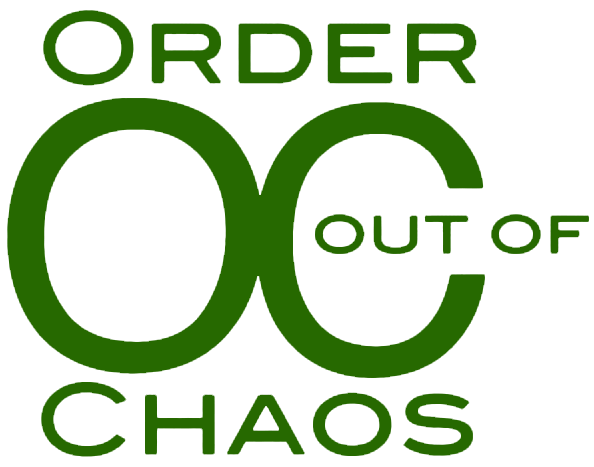How Can I Keep On Top of All These Piles?
Are you struggling to keep track of all the paperwork that floods in from school, work, and the relentless mailbox? Our organizing coach offers clutter-busting strategies for anyone with ADHD or executive function challenges.
Q: “What is the best way to organize papers and bills?” —Boston Mom
Q: “We need strategies for organizing and processing paper of all sorts. Bills, charity solicitations, insurance documents, financial papers…” —Margo
Q: “Each week, a pile of paper and other items about six inches high accumulates on my kitchen table. I am a busy mom of four with two dogs, am in graduate school, and I teach in an after-school program one day a week. I have two kids (9 & 13) with ADHD and was recently diagnosed myself. I do so many things right like sort mail into the recycle bin, pay bills right away, and edit and give things away. I keep a bullet journal, which is an amazing tool to keep me and the whole family’s schedules organized. So about this pile… If I don’t get it put away by week’s end, it moves to the living room floor and from there, if not put away usually winds up in a bag shoved somewhere when company comes. We are six people living in a 1,600 sq. ft. house that is organized, but full. I’ve tried sorters, folios, boxes, baskets — none of this has worked to tame the pile. It’s terrible to need to find something and not know where it is. There has to be a better way.” —Bklynebeth
Q: “I need good systems to deal with (1) paperwork (2) to-do lists and (3) a daily and weekly schedule for myself and my kids.” —SDTwinMom
Hi Boston Mom, Margo, Bklynebeth, and SDTwinMom:
Ah, the dreaded paperwork. It just doesn’t stop piling up, right? It feels like you need a life jacket just to keep from drowning. Hang on! I’m here to rescue you.
The key to staying on top of paperwork is to create easy and efficient systems that work for brains with attention deficit disorder (ADHD or ADD). How do you know what works? Get started by asking yourself the following questions:
Am I a filer or a piler?
Revealer or concealer?
Do I need to see things to remember they exist?
Do I like things color-coded?
Where do I have ample space to store files and papers?
Do others need access to these papers?
[Free Download: 22 Clutter-Busting Strategies]
By asking these questions, systems will naturally form. And the best method is one that you can comfortably set up, maintain, and access. Here are a few strategies to get you all started:
1. Think Past/Present/Future when organizing and filing papers.
PAST represents papers that you need to keep but don’t need to access regularly. Think taxes, insurance policies, old health insurance documents. These can be stored in file cabinets, boxes or even binders, and placed in storage.
PRESENT is what you need and use NOW. Current bills, medical info, travel plans would fall into this category. These items need to be in your “prime real estate.” Desktop files on your home office desk, baskets on your kitchen counter or even a rolling cart that you can move from room to room.
FUTURE consists of papers you will eventually access but not right now (future travel plans, home renovations plans, etc.). Store those where they are easily accessible. I like to create binders with clear plastic sleeves to hold my future materials.
2. Use your airspace.
It’s literally my favorite way to organize papers. Hang magazine holders or wire files on the wall to organize mail and other documents in an efficient manner. Using your airspace helps to keep important papers visible and top-of-mind. Label the hanging files to make organization fast and simple. Or use your wall space to create a message center. Use magnetic boards, cork, dry-erase boards, to hold papers you need to access quickly, keep to-do lists in sight, and family schedules easily accessible.
[Self-Test: Is Your Clutter and Disorganization Out of Control?]
3. When in doubt, throw it out.
I’m a little cold-hearted when it comes to this. But before ANY paper gets into my house, it is sorted over the recycling bin or the shredder. Most paper isn’t personal so don’t treat it as such. Make hard cuts and get rid of what you don’t need before it takes up space in your home.
4. Go paperless as much as you can.
Pay your bills online, scan receipts, and sign up for a mobile application program that will store all your medical records. Create folders on your computer the same way you would your file cabinet. Anyway you can think to reduce the paper coming in will take out the stress and overwhelm.
5. One in, one out.
This rule applies to EVERYTHING we own (yes, even paper), especially if we live in small spaces. Blylynebeth, you mentioned a detailed pile of stuff that goes from your kitchen to the living room to a paper bag. A wise woman once said that clutter is delayed decision-making. I like to take that one step further and ask if you have room for everything you want to keep? And if so, does everything have a specific home so you know where everything goes? Once we designate homes for all our stuff, maintaining our organizing systems naturally follow.
[ADDitude Editors Share: The Products We Love!]
* BOSTONMOM, you also asked about ideas for creating homework systems for your 5th grader. Check out the column I wrote on this exact topic here. And if you want even more info, head to my website at orderoochaos.com.
